SEO content is more than just keywords—it’s about delivering a great user experience while meeting search engine expectations. If you’re making mistakes like ignoring mobile optimization or focusing too much on quantity over quality, you’re losing out on rankings and traffic. In this article, we’ll cover 10 common SEO mistakes that could be holding your site back, and show you how to fix them for long-term success.

Table of Contents
10 SEO Content Mistakes to Avoid
1. Are You Ignoring Keyword Research?
Keyword research is a crucial part of SEO that many people overlook. Effective SEO starts with knowing what keywords are popular in your niche and how competitive they are.
It’s the foundation for content creation that answers your audience’s needs and drives organic traffic. Without proper keyword research, your content won’t rank as well, and you’ll struggle to connect with the right audience.
1.1 Why is Keyword Research Important in SEO?
Keyword research informs your content strategy. It helps you understand what terms your audience is searching for, allowing you to create content that people are already looking for.
When you skip this step, you risk producing content that shows the same content as your competitors without offering any additional value. As a result, your pages may never reach their full potential.
1.2 How Can Poor Keyword Selection Hurt Your Content?
If you choose the wrong keywords, you’ll create content that doesn’t align with what people are searching for. This can lead to low SEO traffic, even if your content on the page is well-written. You might also focus on keywords that are too competitive, making it hard to rank against stronger websites.
1.3 What Tools Can Help with Keyword Research?
There are several tools that can make your SEO important work easier, like Google Keyword Planner, Ahrefs, and SEMrush. These tools are a valuable part of any content management system and can help you create content that stands out.
By using the right tools, you can optimize the body of your content for both search engines and readers.

1.4 Are You Overloading Your Content with Keywords?
Overusing keywords can damage your SEO efforts, even if the content is relevant. While it’s tempting to pack your text with search terms, doing so can backfire and hurt your search engine rankings. This practice, often called “keyword stuffing,” not only disrupts the flow of your writing but can also lead to penalties from Google.
1.5 How Does Keyword Overload Affect SEO?
You can still optimize your content without overdoing it by adding keywords naturally. Search engines reward SEO content that elevates user experience over how many keywords you use. Overloading your content with keywords can make it seem unnatural and hurt readability.
When users land on your page and find it difficult to engage with, they’ll quickly leave, which negatively impacts your search result ranking.
1.6 How to Balance Keywords and Content Quality
To rank well in search engine results, you need a balance between SEO best practices and high-quality writing.
Use keywords in places like headings, meta descriptions, and the body of your content, but make sure the overall piece reads smoothly.
Each piece of content you write should provide information or solve a problem, not just aim for a high search engine ranking.
If you write content that satisfies what users are genuinely looking for, your SEO will improve naturally. Search engines are more likely to reward web pages that optimize for people rather than search bots.
2. Are You Overlooking Content Quality?
Content quality plays a significant role in determining how well your SEO efforts perform. Search engines are designed to deliver the best possible user experience, which means that the quality of your content can directly impact your search engine rankings.
If you’re not prioritizing high-quality content, your website could suffer in the long term.
2.1 How Does Content Quality Impact SEO Rankings?
Search engines, especially Google, are constantly refining their algorithms to reward high-quality SEO content. Google’s algorithms assess various factors, like how engaging, informative, and accurate a page is.
Low-quality content, filled with fluff or irrelevant information, won’t rank well in search results. High-quality content that answers users’ questions thoroughly and clearly is much more likely to appear at the top of search engine rankings.
Content that’s well-researched, organized, and valuable keeps users on your page longer, reduces bounce rates, and signals to search engines that your site is trustworthy. This helps optimize your overall SEO performance.
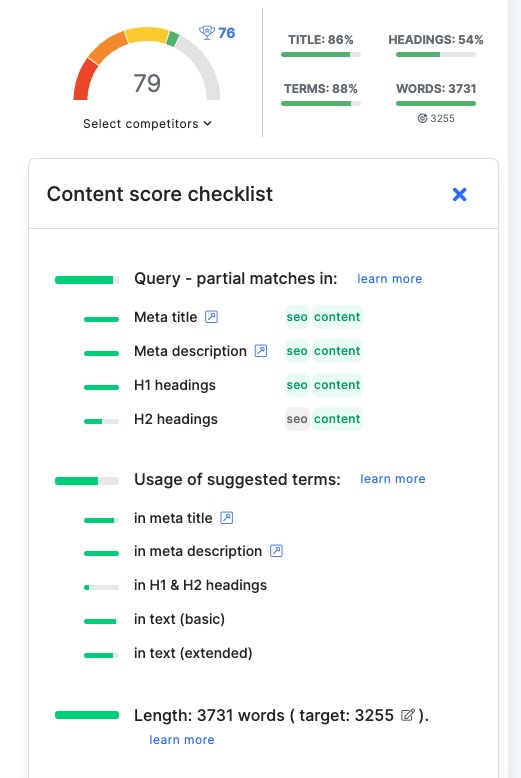
2.2 What Are the Signs of Low-Quality Content?
Some common signs of low-quality content include poor structure, irrelevant information, or content that is overly keyword-stuffed. This type of content often lacks depth or fails to fully answer the user’s query, resulting in a poor user experience.
Other indicators include outdated facts, excessive grammatical errors, or content that doesn’t optimize for readability.
2.3 How Can You Improve the Quality of Your Content?
To improve your content quality, focus on delivering value. Make sure that every piece of content you publish is accurate, informative, and solves the reader’s problem. Break up text with subheadings, include relevant links, and use visuals to enhance readability.
High-quality SEO content should also be made for both users and search engines, using keywords naturally without sacrificing clarity.
3. Are You Forgetting to Update Old Content?
Updating old content is crucial for staying competitive in SEO (search engine optimization). Search engines, like Google, prioritize fresh, relevant content when ranking search results. If you ignore older posts, your content could drop in rankings, leading to fewer clicks and less engagement over time.
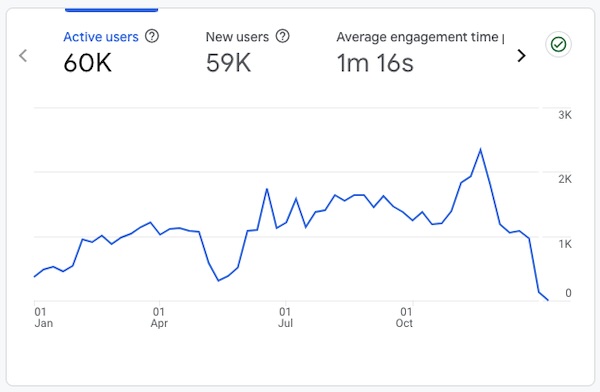
3.1 Why is Updating Old Content Important for SEO?
If your content doesn’t match what people are searching for today, it can become irrelevant. Regular updates help you match current trends, so that your on-page SEO works with modern search intent. This keeps your content engaging and signals to Google that your page is valuable.
| Action | Description | Frequency |
|---|---|---|
| Review high-traffic pages | Check for outdated information and keywords | Every 6-12 months |
| Add new stats or insights | Ensure data is current and relevant | As needed |
| Improve on-page SEO | Optimize headers, meta descriptions, etc. | Regularly |
| Check user experience | Ensure fast loading and mobile-friendliness | Regularly |
3.2 How Often Should You Revisit and Update Your Content?
A good rule of thumb is to revisit content every 6 to 12 months. Focus on pages that bring in high traffic or are starting to lose traction in rankings. You can also set up alerts to track keyword performance and adjust when you notice a drop in visibility.
3.3 What Strategies Can You Use to Refresh Your Old Content?
- Update Information: Add recent stats, new insights, or updated data. Make your content current and relevant to today’s search queries.
- Improve On-Page SEO: Optimize headers, meta descriptions, and alt tags to better align with updated keywords. This ensures your SEO writing stays effective and helps search engines understand the purpose of your page.
- Add New Sections: Expand your content with new trends or information. Make sure it provides value beyond what’s already available. This helps users engage longer and increases the page’s overall quality.
- Enhance User Experience: Ensure your content loads fast, is mobile-friendly, and easy to navigate. A good user experience can impact on-page SEO by reducing bounce rates and increasing dwell time.
4. Is Your Content Not Mobile-Friendly?
With more people accessing websites from smartphones than ever before, mobile optimization is essential for SEO. Google uses mobile-first indexing, meaning it prioritizes the mobile version of your site when determining rankings. If your site isn’t optimized for mobile, it could struggle to rank well, no matter how great the content you’ve written is.

4.1 Why is Mobile Optimization Crucial for SEO?
Mobile optimization ensures that your SEO content writing is accessible and user-friendly across all devices. Poor mobile experiences can lead to higher bounce rates, which negatively impacts your rankings. If you want your content to rank on search engines, it must offer a seamless mobile experience. In short, without mobile optimization, your quality content could be buried in search results.
| Tool Name | Purpose | Link/Notes |
|---|---|---|
| Google Lighthouse | Check if content is optimized for mobile | Free online tool |
| PageSpeed Insights | Analyze and improve page load times | Free Google tool |
| Google Search Console | Monitor mobile performance and issues | Essential for SEO |
4.2 How Can You Test if Your Content is Mobile-Friendly?
Google’s Lighthouse is a quick and easy way to check if your site meets mobile standards. You can also use tools like Google Search Console and PageSpeed Insights to assess your site’s mobile performance. These tools will highlight any issues with your web content, such as slow load times or poor layout, and offer tips for improving the mobile experience.
4.3 What Are Some Tips for Creating Mobile-Optimized Content?
- Use Short Paragraphs: Break up your text into smaller sections. Long blocks of text are harder to read on mobile, so concise, scannable sections will keep readers engaged with the content you’ve written.
- Responsive Design: Ensure your site design adapts to different screen sizes. This helps your publish content look great and function smoothly on any device.
- Optimize Images: Compress images to speed up loading times without sacrificing quality. Quick-loading pages improve user experience, which is vital for quality content to rank well.
- Improve Readability: Use larger fonts and clear headings. Mobile users should be able to read your web content without zooming in or struggling with small text.
5. Are You Neglecting Internal and External Links?
Links—both internal and external—are vital components of any successful SEO strategy. They not only help your audience navigate your site but also boost your content’s authority and visibility.
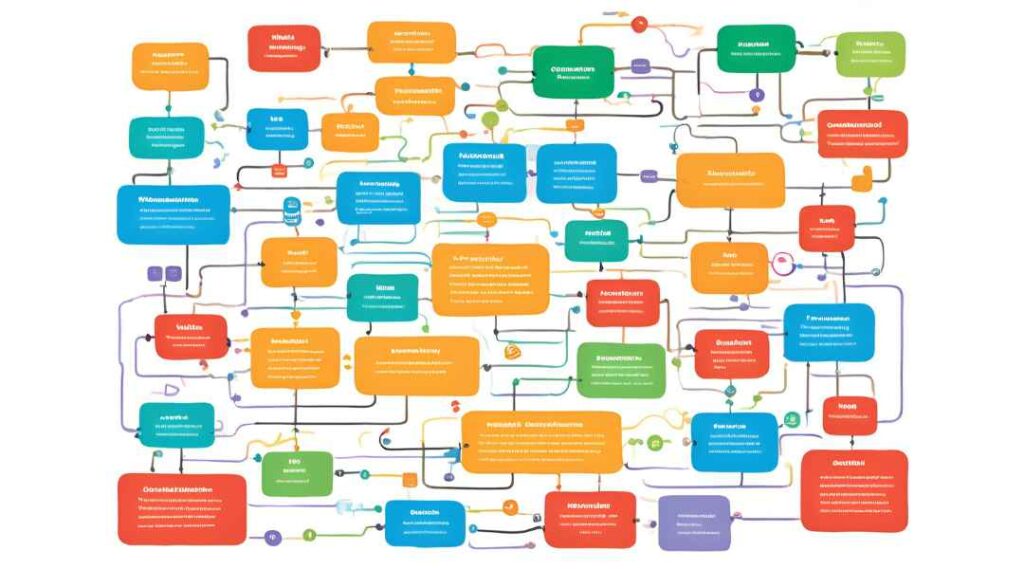
5.1 What Role Do Internal Links Play in SEO?
Internal links connect different pages of your website, making it easier for search engines to crawl and index your site. They help distribute authority across your pages, allowing even your newer or lesser-known posts to gain traction.
When you’re writing with SEO in mind, adding relevant internal links can improve your site’s structure and help multiple pages rank in search engines. For example, linking from long content to shorter, related posts can give both pieces a ranking boost.
| Link Type | Role in SEO | Best Practices |
|---|---|---|
| Internal Links | Help with site structure and distribute page authority | Link to related, relevant content |
| External Links | Boost content credibility with reputable sources | Link to authoritative, up-to-date content |
5.2 How Can External Links Enhance Your Content’s Credibility?
External links to authoritative, reputable sources can strengthen your content by showing readers (and search engines) that you’ve done your research. Linking out to fresh content or studies adds credibility and helps users trust the information you’re providing.
5.3 What Are Some Best Practices for Linking?
- Link Naturally: Don’t force links. When you’re writing, only add internal or external links where they truly enhance the reader’s experience or provide valuable additional information.
- Use Descriptive Anchor Text: Avoid generic terms like “click here.” Instead, use descriptive anchor text that tells users and search engines what the link is about. This helps both SEO and user experience.
- Regularly Audit Your Links: Broken links hurt both your credibility and user experience. Periodically check your internal and external links, especially in content designed to rank high in search results.
- Balance Internal and External Links: Too many external links can lead users away from your site, while too few may limit your credibility. Strive for a healthy mix that supports the information you present.
By incorporating internal and external links into your content with SEO in mind, you enhance your page’s authority and structure, helping it rank in search engines.
6. Are You Using Duplicate Content?
Duplicate content refers to blocks of text that appear on multiple pages within or across websites. While it may seem harmless, it can negatively impact your SEO efforts by confusing search engines and diluting the visibility of your pages.
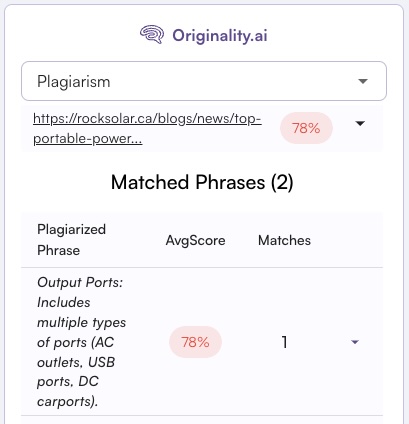
6.1 What is Duplicate Content and Why is it Harmful?
Duplicate content can occur when the same aspect of content is repeated across different URLs. This confuses search engines because they don’t know which version to prioritize. As a result, none of the pages may perform well, reducing your chances of having content that ranks.
In addition, duplicate content can waste your crawl budget, preventing new or valuable content from being indexed. It also affects user experience, which can hurt your site’s reputation.
| Method | Description | When to Use |
|---|---|---|
| Canonical Tags | Mark the preferred version of a page | For pages with similar content |
| 301 Redirects | Direct users and search engines to the correct page | When consolidating pages |
| Noindex Tags | Exclude certain pages from search engine indexing | For non-SEO pages |
6.2 How Can You Identify Duplicate Content on Your Site?
Tools like Copyscape, Siteliner, and Google Search Console can help you detect duplicate content. They scan your pages for identical blocks of text, allowing you to pinpoint where duplication is happening. It’s especially important to audit your content for search performance, so that you’re not competing with your own pages.
6.3 What Steps Can You Take to Avoid Duplicate Content Issues?
- Canonical Tags: If you need to have similar content on different pages (e.g., for product listings), use canonical tags. These tags tell search engines which page should be considered the primary one, preventing duplicate content penalties.
- Rewrite and Diversify: When you’re creating content for search, make sure each page has unique and valuable content. Avoid copying large sections of text across multiple pages. Instead, focus on writing high-quality, original content tailored to specific topics or audiences.
- Redirects: Use 301 redirects to consolidate pages with similar content. This helps avoid confusion and ensures your content marketing strategy remains strong, pushing users and search engines to the correct pages.
- Noindex Tags: If you have pages that don’t need to rank, like printer-friendly versions or archive pages, use noindex tags. This tells search engines to ignore these pages for ranking purposes.
Understanding the basics of SEO and avoiding duplicate content ensures that the content you create remains competitive and effective in helping your site rank higher in search results.
7. Is Your Content Too Long or Too Short?
Striking the right balance between long and short content is key to engaging readers and performing well in search rankings. If your content is too long, it may overwhelm readers; if it’s too short, it might not provide enough value. So, how do you find the sweet spot?
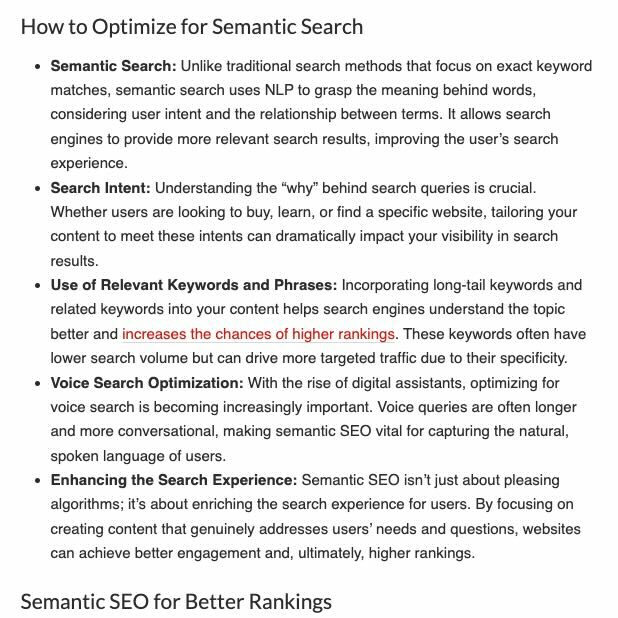

7.1 Why Does Length Matter?
Content length impacts both user experience and SEO. Longer content often performs better because it tends to be more in-depth, covering a topic comprehensively. However, if your content is too long and lacks focus, readers might lose interest and leave. On the other hand, short content can be valuable if it gets straight to the point, but it may struggle to rank if it doesn’t address search intent fully.
7. 2 How to Determine the Ideal Length for Your Content
Consider the content types you’re producing and the topic you’re covering. Some subjects require more detail, while others can be addressed in fewer words. For example, how-to guides and in-depth articles might need 1,500+ words, while quick tips or product descriptions may only require 300-500 words. Focus on the value you provide rather than a specific word count.
| Content Type | Recommended Length | Why It Works |
|---|---|---|
| Blog Posts | 1,000 – 2,500 words | Allows for in-depth exploration |
| Product Descriptions | 300 – 500 words | Short, focused, and direct |
| How-To Guides | 1,500 – 3,000 words | Covers details comprehensively |
| FAQ Pages | 500 – 1,200 words | Clear, concise answers |
7. 3 Best Practices for Finding the Right Length
- Match User Intent: When people read your content, they’re looking for answers. Ensure your content fully addresses their questions without unnecessary fluff. Writing for SEO doesn’t mean stuffing content with keywords or padding word count. It’s about answering the search query comprehensively.
- Balance New and Existing Content: If you’re expanding on existing content, make sure you’re adding fresh content to rank better in search engines. Keep it relevant to the topic and avoid dragging out sections just to hit a word count.
- Measure Engagement: Use tools like Google Analytics to see how users interact with your content. Are they staying on the page and engaging with it, or bouncing quickly? This can help you adjust the length to better suit your audience.
8. Are You Focusing Too Much on Quantity Over Quality?
In the rush to produce more content, it’s easy to fall into the trap of prioritizing quantity over quality. While frequent updates can keep your site active, focusing too much on volume can hurt your SEO and reader engagement.
8.1 What Are the Dangers of Prioritizing Quantity in Content Creation?
When you prioritize quantity, you risk producing shallow, repetitive, or poorly researched content. This can lead to lower engagement, higher bounce rates, and even penalties from search engines for thin content.
Creating optimized content that lacks depth won’t rank well in the long term, and it won’t build trust with your audience. Ultimately, readers are looking for content that helps them solve problems or answer questions. If your content doesn’t do that, they’ll go elsewhere.
| Metric | What It Measures | Why It’s Important |
|---|---|---|
| Engagement (Time on Page) | Measures how long users interact with content | Indicates reader interest |
| Bounce Rate | Measures if users leave without interacting | Low bounce rate = relevant content |
| Conversion Rate | Tracks how often users take desired actions | Shows content effectiveness |
| Keyword Rankings | Measures how well content ranks over time | Indicates SEO success |
8.2 How Can You Maintain Quality While Producing Regular Content?
- Plan Your Topics Carefully: Instead of churning out posts just to meet a quota, focus on writing high-quality content that addresses your audience’s needs. Research what they’re searching for and make sure your content provides meaningful, valuable insights.
- Use a Content Calendar: Spacing out your content with a calendar can help you stay consistent without sacrificing quality. This way, you’re not rushing to publish more posts but ensuring each one is well-researched and engaging.
- Repurpose and Update: Rather than constantly producing new content, revisit old posts. Updating and improving existing articles is an effective way to deliver content that helps your audience and improves your SEO without sacrificing quality for the sake of new material.
8.3 What Metrics Should You Use to Measure Content Quality?
- Engagement Rates: High engagement, such as time spent on page, social shares, and comments, indicates your content resonates with readers.
- Bounce Rate: A high bounce rate could signal that your content isn’t delivering what readers expected. Analyze where visitors drop off to identify areas for improvement.
- Conversions and Click-Through Rates (CTR): Whether you’re aiming for newsletter signups, purchases, or more page views, tracking these metrics will show if your content is effectively leading to the desired action.
- SEO Performance: Make sure your content is not only optimized for search engines but also providing genuine value. Look at how your keywords are performing and whether the content is ranking well over time.
By focusing on creating optimized content that serves your audience’s needs, you’ll ensure that you’re writing high-quality content that performs well both in search rankings and in engagement.
9. Are You Ignoring User Intent?
User intent refers to the reason behind a person’s search query—what they’re looking to accomplish when they type something into a search engine. Ignoring user intent means your content may miss the mark, even if it’s optimized for keywords.
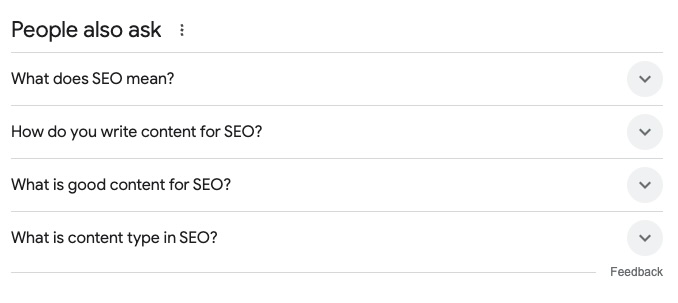
9.1 What is User Intent and Why Does It Matter?
User intent falls into three main categories: informational (seeking knowledge), navigational (looking for a specific site), and transactional (ready to buy). Understanding this helps ensure your SEO content delivers what the searcher actually wants.
If you fail to align with user intent, your content may get clicks but won’t keep users engaged or lead to conversions, reducing your effectiveness in both user satisfaction and SEO performance.
9.2 How Can You Align Your Content with User Search Intent?
- Understand the Query: When you begin the content creation process, think beyond keywords. Analyze the query to determine what kind of answer the user expects. Is the person looking for a quick fact, an in-depth guide, or a product to purchase? Tailor your content to meet that need.
- Match Content Type to Intent: Ensure that the type of SEO copywriting you use matches the intent. For example, if the search is informational, long-form guides or how-to posts will work best. If it’s transactional, focus on product pages or reviews. When your content is a great match for the user’s intent, it improves engagement and rankings.
- Provide Clear Answers: Make sure your content is well structured to address the user’s question upfront. Long-winded introductions or irrelevant details will cause users to bounce. Clarity and relevance help retain your audience and build trust.
9.3 What Tools Can Help You Analyze User Intent?
- Google Search Console: Use Search Console to analyze what keywords are driving traffic to your site. This can give insights into the intent behind those searches, helping you refine your content creation process.
- Google’s ‘People Also Ask’: This feature is invaluable for uncovering related questions, giving you a clearer idea of what users want to know.
- SEMrush or Ahrefs: These SEO tools provide keyword data that highlights search volume and user intent, helping you create SEO content that aligns better with user expectations.
By focusing on user intent in your seo copywriting, you ensure that your content is a great match for what people are searching for, leading to better engagement and higher rankings.
10. Are You Overlooking Page Speed?
Page speed is a critical factor in both user experience and SEO. If your website takes too long to load, visitors are likely to leave, and search engines like Google may penalize your site in rankings.
10.1 Why Does Page Speed Matter for SEO?
Fast-loading pages provide a smoother, more enjoyable experience for users. When a site is slow, it increases bounce rates, meaning users leave your site without engaging. This sends negative signals to search engines, which could hurt your rankings. In fact, Google has explicitly stated that page speed is a ranking factor. If you want your content to rank and perform well, optimizing for speed is essential.
10.2 How Can You Improve Page Speed?
- Optimize Images: Large image files are often the main cause of slow load times. Compress images without sacrificing quality to ensure they load quickly on all devices.
- Leverage Browser Caching: Caching allows browsers to store certain elements of your website, so they don’t need to reload every time a user visits. This can significantly speed up repeat visits to your site.
- Minimize JavaScript and CSS: Remove any unnecessary JavaScript and CSS files, as they can bog down your site’s load time. Streamline your code to ensure faster delivery.
10.3 Tools to Measure and Boost Page Speed
- Google PageSpeed Insights: Analyze your site’s speed and get recommendations on how to improve it for both desktop and mobile.
- GTmetrix: Provides detailed reports on page performance and helps you track load times.
- Pingdom Tools: Offers insights into how fast your site loads and identifies elements that slow it down.
Resources
- Google Search Central’s Mobile-First Indexing Best Practices
- Google’s PageSpeed Insights Tool
- Moz’s Guide to Internal Linking for SEO
- Ahrefs’ Guide to Understanding Search Intent
- Yoast’s Article on Duplicate Content
Conclusion
Fixing these common SEO mistakes can transform how your content performs in search engines. By focusing on user intent, page speed, and keeping your content fresh and relevant, you’ll not only boost rankings but also create a better experience for your audience. SEO success isn’t just about traffic; it’s about delivering value.
Related Posts